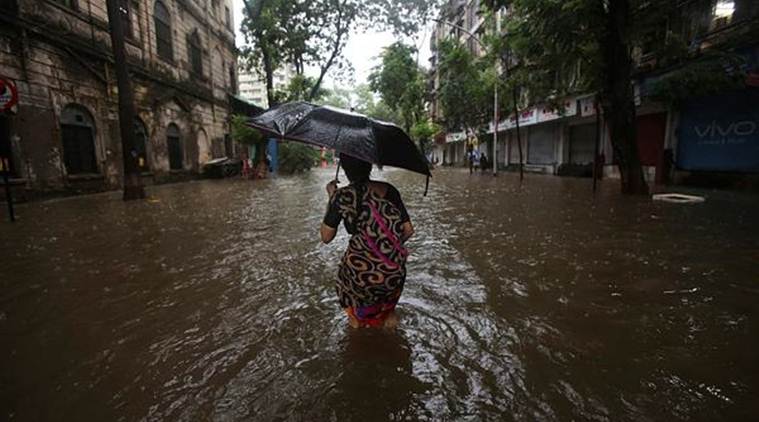
Monsoons is jokingly said to be the actual finance minister of India as everything in India depends on it. The monsoons don’t just shape our economic policies but also the outcome of our economy. The city of Mumbai besides being discussed for its financial prowess is also talked about for its torrential rains, which comes visiting four months in a year. While being a source of relief for most it also becomes a reason for disruption and distress on days when it rains uncontrollably.
The monsoon pattern for Mumbai has changed in the last 10 years. From 120 days of monsoon, it’s come down to about 70 but the volume of rainfall has almost doubled. Earlier this week, private weather forecaster Skymet warned that the city could witness the worst rains since July 2005 (when rainfall of over 900mm was recorded in a single day).
This June, Mumbai has already received 505 mm of rain out of which 485 mm was in just four days i.e between June 28 and July 1 noon. This definitely is a cause for worry and has a lot to do with climate change. To break it down further for better understanding the challenge, Mumbai’s western suburbs received 400 mm of rain, in 5-6 hours span within a 24-hour cycle. Dindoshi, in the suburbs, received 480 mm rain overnight. This is unprecedented.
Any city in the world crumbles and life stops for days, just like when there’s snowfall in New York or heavy rain in any European city. I can’t think of any large metropolitan coastal city in the world which gets as much and as severe torrential rain (on specific days in monsoon and that too at times coinciding with high tide) as Mumbai. No amount of man made infrastructure can take care of these conditions. It will be a point to see how soon the water is regressed and managed after the downpour ends and high tide recedes, that is the bigger test of its infrastructure.
Now for capacity building and augmentation of its infrastructure by the BMC — Mumbai’s stormwater drains capacity has been increased from 25 mm to 50mm per hour which is as per international design standards. There’s not much one can do beyond this, especially for a coastal city like Mumbai that has been reclaimed over the years.
Add to that the BRIMSTOWAD project after the 2005 cloudburst which initiated pumping stations across Mumbai — each of these six pumping stations can pump out 6,000 litres of water per second. Last year, within a span of six hours, water equal to the volume of 1.5 times of Tulsi lake was pumped out.
Nullahs are cleaned every year, trash boom barriers to prevent floating debris are installed. Mithi, Poisar, Dahisar rivers are being widened, deepened and populations living alongside are being either shifted or trained in waste management.
The best possible standards and solutions are in place to ensure Mumbai doesn’t stop running even a single minute, but we can’t run away from extreme climate change. It is a reality we are living with. We have to tackle it head on and for that a larger thought must be given extreme weather changes to cities like Mumbai that faces extreme monsoon. Seattle faced temperatures as low as -60 degrees this winter and Europe is seeing extreme heat wave.
Those who have a political point to make can do so, but governance should be a priority. Especially so when one sees the circumstances that Mumbai is going through. We have to be prepared for extreme climate change conditions that play havoc with our daily lives and every citizen must hop on board to create awareness, actively participate and engage. We need to find ways to how we can harvest this rainwater and recharge the groundwater table. As a city with high amount of concretisation, most of this rainfall is runoff to the streets and drains.
It is a thought to ponder for every stakeholder that while we have four months of acute rain and the water collected should be able to last us for the whole year. However, we see water shortages just before the onset of monsoons. Water conservation and reducing our water wastage, while becoming more sensitive and aware of this burning issue, would be a few positive steps that help in active participation. It was heartening to know that PM Narendra Modi discussed this issue in the first Mann ki Baat of his second term. Also by creating a separate integrated Water Ministry he has prioritised and highlighted this issue.
To the political opponents we welcome the feedback that comes with solutions and vision, the rest is mere political point scoring.
Priyanka Chaturvedi is Deputy Leader- Shiv Sena. She tweets @priyankac19